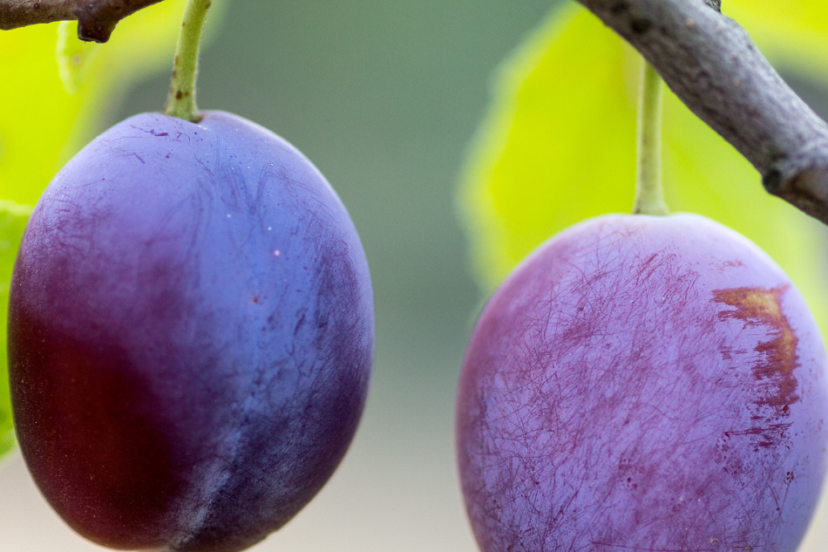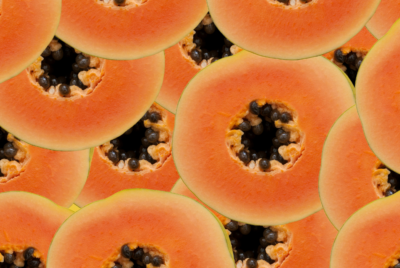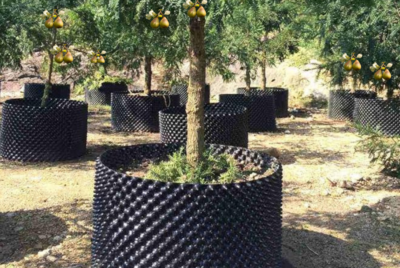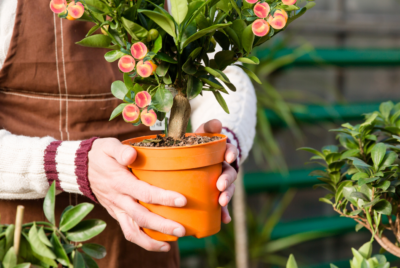The Secret To Growing Plum Trees In Pots
Most gardeners dream of having a bountiful harvest of juicy plums right outside their doorstep, but limited space can be a hurdle. Fear not! With the right care and techniques, you can successfully grow plum trees in pots and enjoy a plentiful yield. From selecting the right variety to providing proper nutrition, this guide will reveal the secrets to your own mini orchard of plum trees in containers. Let’s get started on your journey to homegrown deliciousness!
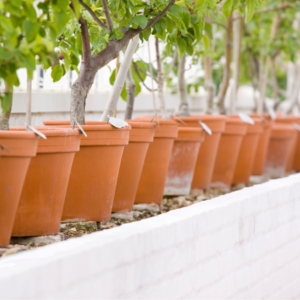
Key Takeaways:
- Choose the right variety: Opt for a dwarf or patio plum tree suitable for container growth.
- Provide proper sunlight: Place the potted plum tree in a spot that receives at least 6-8 hours of sunlight daily.
- Use well-draining soil: Ensure the potting mix has good drainage to prevent waterlogged roots.
- Regular watering and feeding: Keep the soil consistently moist and fertilize during the growing season to promote healthy growth.
- Prune and repot as needed: Prune your plum tree to maintain its shape and size, and repot it every 2-3 years to refresh the soil and root system.
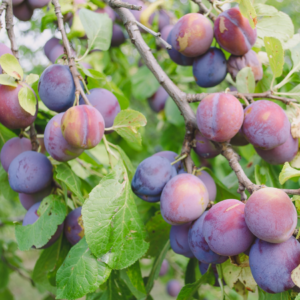
Choosing the Right Plum Variety
Best varieties for potting
Your choice of plum variety can make a big difference in the success of growing in pots. Some of the best varieties for potting include Santa Rosa, Methley, and Satsuma plums. These varieties are well-suited for container growing and can thrive in smaller spaces.
Considerations for climate and space
Space and climate are important factors to consider when choosing a plum variety for potting. Consider the amount of sunlight your space receives and the climate in your region. Dwarf plum varieties are ideal for smaller spaces, while self-pollinating varieties are great for limited growing areas.
Variety selection plays a critical role in the success of growing plum trees in pots. Ensure you choose a variety that is well-suited for container growing, considering factors such as sunlight, space availability, and climate in your region. Dwarf varieties are excellent for limited spaces, while self-pollinating types can increase fruit yield in confined areas. Take into account these factors to select the best plum variety for your container garden.
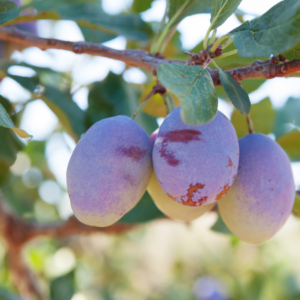
Preparing for Planting
Selecting the perfect pot
Preparing to plant your plum tree in a pot starts with selecting the perfect container. Ensure the pot is at least 20 inches in diameter and has sufficient drainage holes to avoid waterlogging.
Soil and drainage crucials
The key to success in growing plum trees in pots lies in the soil and drainage. Use a well-draining potting mix with a pH level between 6.0 and 7.0 to promote healthy root growth. Incorporating perlite or sand can improve drainage and prevent root rot.
This will ensure that your plum tree thrives and produces an abundance of delicious fruits.
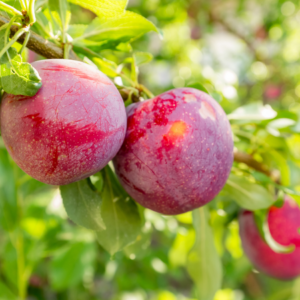
Care and Maintenance
Watering techniques for optimal growth
After planting your plum tree in a pot, watering is crucial. To ensure optimal growth and fruit production, water consistently whenever the top inch of soil feels dry. Avoid overwatering, as this can lead to root rot. Consider using a drip irrigation system for a consistent supply of moisture.
Fertilization and pruning secrets
After establishing a watering routine, fertilization and pruning are necessary for the health of your plum tree. To promote abundant fruiting, feed your tree with a balanced fertilizer in the spring and prune annually in late winter to early spring. This helps maintain a manageable size and encourages new growth.
Pruning is crucial to remove diseased or dead branches, improve air circulation, and shape the tree for better sunlight exposure. Be cautious not to over-prune, as this can reduce fruit production. Proper fertilization and pruning practices will keep your plum tree healthy and productive for years to come.
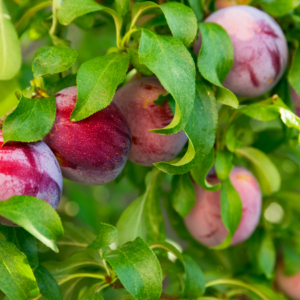
Common Challenges and Solutions
Dealing with pests and diseases
Solutions: Keeping your plum trees healthy and thriving in pots can sometimes be challenged by pests and diseases. To combat this, regularly inspect your trees for signs of trouble such as abnormal growth, yellowing leaves, or spots. Treat any issues promptly with appropriate organic or chemical solutions to prevent them from spreading.
Overcoming environmental stresses
Common stresses: Plum trees in pots can face environmental stresses, including extreme temperatures, fluctuations in sunlight exposure, and inconsistent watering. To ensure your trees stay strong and productive, consider placing them in a location that receives optimal sunlight, monitor moisture levels closely, and protect them from harsh weather conditions with appropriate covers or shades.
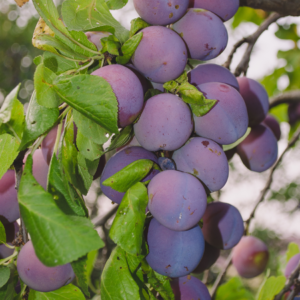
Conclusion on Growing Plum Trees in Pots
With these considerations in mind, cultivating plum trees in pots can be a rewarding experience that yields abundant harvests. By selecting the right variety, providing ample sunlight, proper watering, and occasional pruning, you can enjoy the beauty of plum trees and savor delicious fruits right from your own backyard or balcony. Happy planting!
FAQ’s about Growing Plum Trees in Pots
Q: Why should I grow plum trees in pots?
A: Growing plum trees in pots makes it easier to control their environment, requires less space, and allows you to move them around as needed for optimal sunlight and temperature.
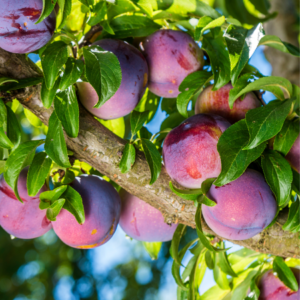
Q: What type of pot is best for growing plum trees?
A: Choose a large pot with good drainage to prevent waterlogging. A 20-24 inch diameter pot that is at least 18 inches deep is recommended for healthy root growth.
Q: How often should I water my potted plum tree?
A: Water your plum tree consistently, keeping the soil moist but not waterlogged. In hot weather, you may need to water every 2-3 days, while in cooler weather, watering once a week should be sufficient.
Q: When is the best time to fertilize my potted plum tree?
A: Fertilize your potted plum tree in early spring before new growth begins and again in late spring or early summer. Use a balanced fertilizer specifically formulated for fruit trees.
Q: How do I protect my potted plum tree from pests and diseases?
A: Inspect your plum tree regularly for signs of pests or diseases such as aphids or fungal infections. Treat any issues promptly with organic pest control methods or fungicides, and avoid overwatering to prevent root rot.
Unique Methods to Foster A Citrus Plant from Seeds?
Companion Planting Blueberries
What nuts have the lowest amounts of Oxalates to minimise Kidney Stones.

